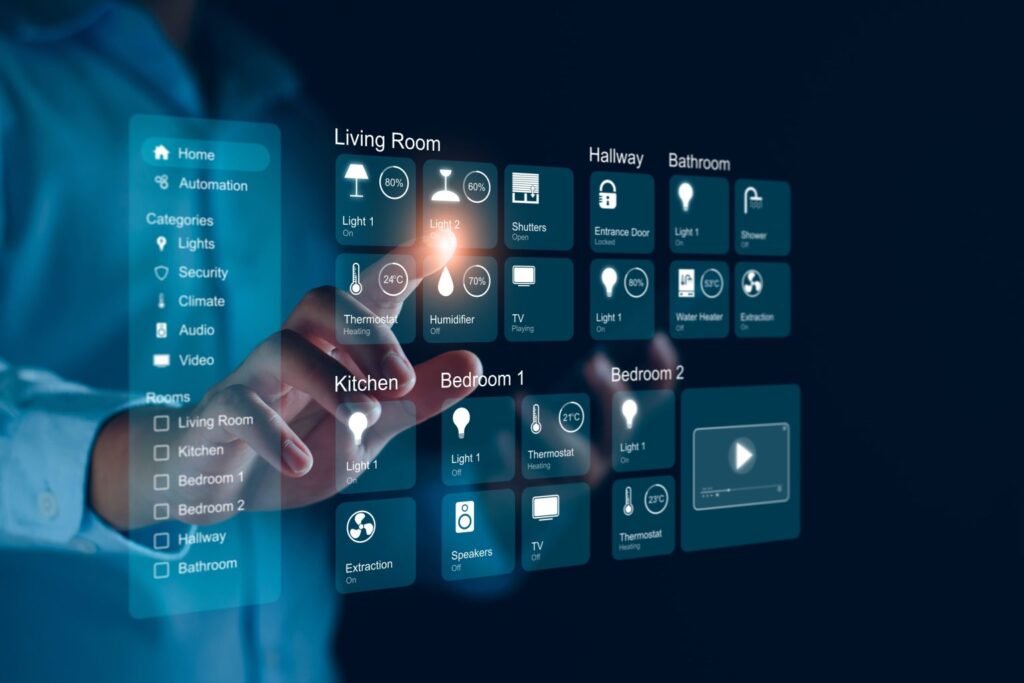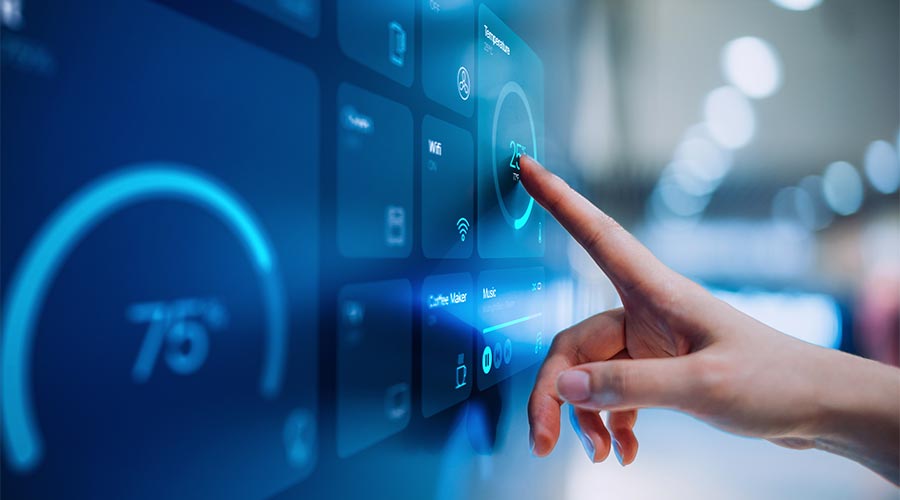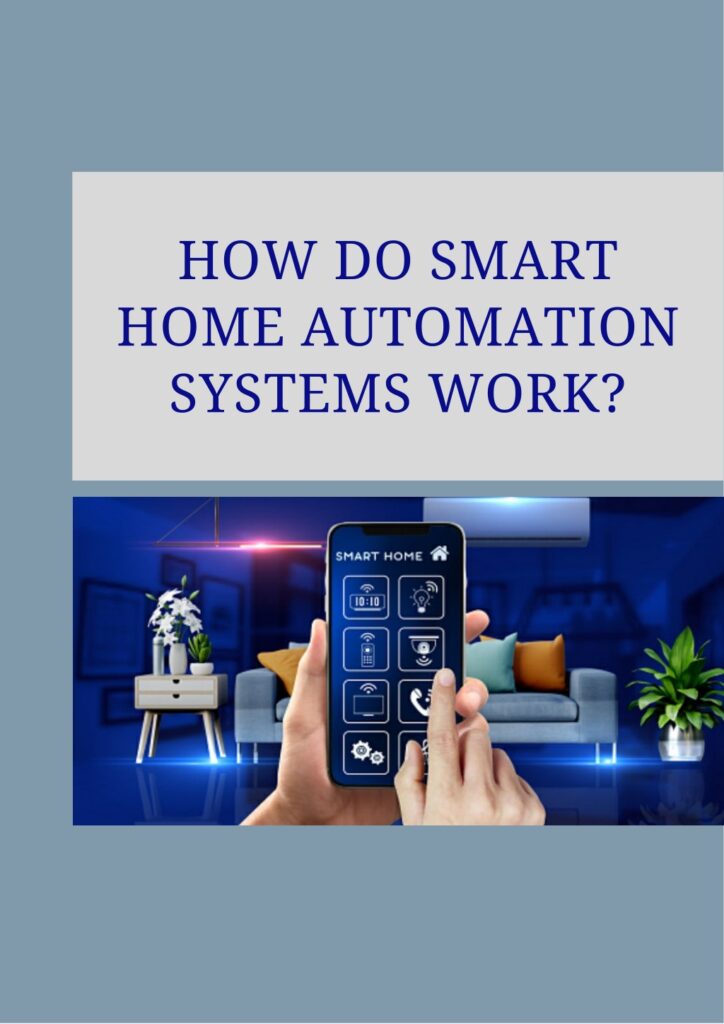

Have you ever wondered if your home can be more than just bricks and cement? What if it could adjust its settings intuitively as you need? Imagine a scenario where your home wakes up with you–blinds opening, coffee brewing, perfect shower temperature. This is what smart home automation looks like. Isn’t it amazing? It is more than just having a bunch of gadgets decked up in your living space. A symphony of sensors, algorithms and connectivity work behind the scenes to make the magic happen. In this article, you’ll learn about home automation, how it works and its key benefits. Read on to discover the popular applications, challenges, and trends. Discover how to automate your home for modern living.

What is Home Automation ?
While it is a recent technology, it looks like a huge feat to some people. However, it is less complicated than you think. Let us begin with an understanding of what is home automation. It is a technology that allows you to control your home devices automatically or remotely. You can define and trigger automatic functions for devices like lighting, security, and appliances through rules, scenes or schedules.
Rules make a device respond to a certain scenario or an action of yours. For example, a light in your room turns on when you open the door. Scenes let you group devices so that each of them performs a particular action when the scene is triggered. Schedules allow you to pre-define a device’s function in certain ways at certain times. For instance, you can schedule the lights in the hall to turn on at dusk. Thus, home automation helps control the working of devices with minimum human intervention. It makes your life more convenient and helps save various costs.

How Home Automation works ?
Home automation uses smart devices, sensors and controllers that communicate through a central system to automate your home. The central system is typically a device that puts everything together. It can be a controller app on your smartphone or a smart speaker like Siri or Alexa. While most present-day home automation systems rely on the Internet to function, it is also possible for some devices to work without a direct Internet connection. This requires alternative communication protocols like Bluetooth or Zigbee to connect to a hub.
The hub connects to the internet, allowing the devices to be controlled remotely via the app. It acts like a bridge letting these devices connect with the rest of the smart home system and access the internet as and when required. Thus, devices without built-in WiFi or internet access can still be a part of the home automation setup. Home automation works on three levels:
- Monitoring: It lets you check on devices remotely through an app.
- Controlling: Users can remotely control a device’s working and decide how it functions.
- Automating: Users can set up devices to trigger each other based on a scenario or an event.

Key Benefits of Home Automation ?
- Remote Access: You will be able to control home devices remotely using a smartphone app or voice assistant. It simplifies managing your home with things like unlocking the door for the housemaid without hiding the key under the carpet.
- Comfort & Ambience: How well can you sleep peacefully once you realise you left the washroom lights on? With smart automation, you can turn them off without getting up from the bed. Be it controlling the lighting or indoor temperature, you can fine-tune your home’s ambience from anywhere.
- Convenience: Controlling your devices from a phone or through a voice assistant, setting schedules on them and syncing with them–now that is convenience! You do not have to manually fine-tune them to the varying settings and moods across the day.
- Enhanced Safety: Different smart security products can increase your home’s safety. Smart locks and sensors for doors or windows provide real-time monitoring and alerts. Smart security cameras can detect people and video doorbells let you greet whoever is at the door from anywhere via the internet.
Applications of Home Automation
Home automation is used in various ways to enhance comfort, convenience, security, and energy efficiency in day-to-day life.
- Smart lighting: Smart bulbs and automated lights turn off or on based on motion detection or schedules to save energy. You can program pre-set lighting scenarios, control the brightness, and turn the lights on or off using your phone or voice command.
- HVAC: Smart thermostats can auto-adjust temperature settings based on a schedule or by detecting your presence. You can remote-control the device from anywhere using your smartphone app or voice assistant. Adjusting the temperature only when needed helps optimise power consumption.
- Home security systems: Smart locks, cameras and alarms provide real-time monitoring and alerting. With smart locks, you can lock or unlock your home from anywhere. Smart sensors can detect motion and open doors or windows for you. Security cameras watch over your home and receive alerts when motion is detected. You can also automate the security routines.
- Smart Appliances: You can control devices like ovens, refrigerators and washing machines remotely. Using an app on your mobile phone or voice command, you can start, stop, and adjust the settings of a smart appliance. Monitoring and controlling electronic appliances lets you conserve energy.